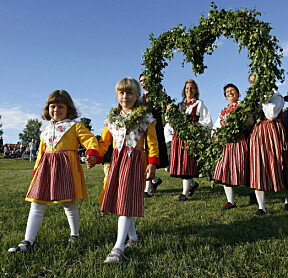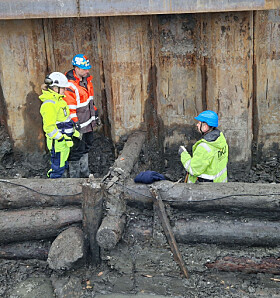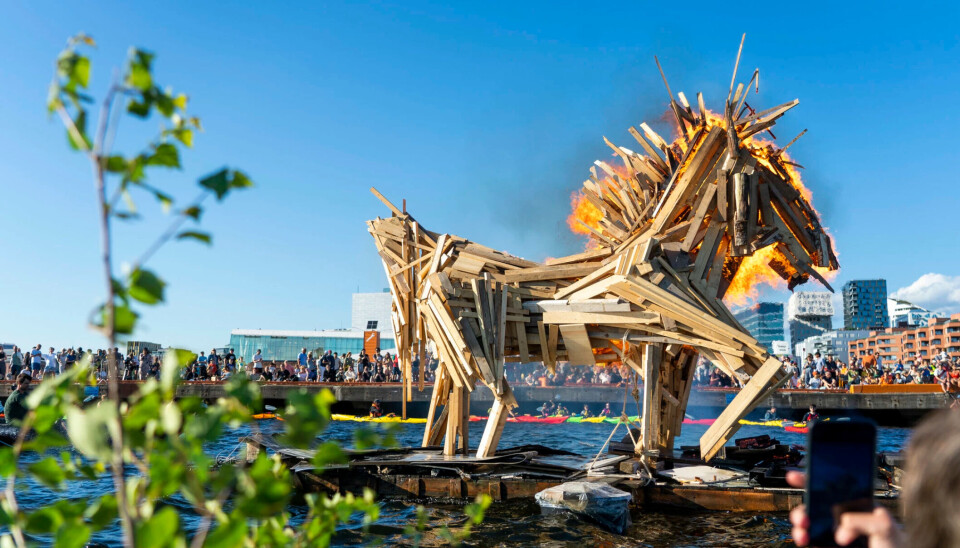
Why do Scandinavians celebrate Midsummer?
“People were not supposed to work, and farmers were required to drink beer,” cultural historian Herleik Baklid says. This was also a day when evil forces were out and about. And you should pick flowers, preferably while naked.
If you are Norwegian, you probably associate the evening mostly with bonfires on the beach. However, in the Middle Ages, Midsummer on June 23 was an important Christian holiday. The day was dedicated to John the Baptist, hence why it is called St. John’s Eve in English.
The significance of the day in Christian Norway was due to Catholicism and the importance of saints. In the Evangelical Lutheran Church, which is the largest today, there are no saints.
Today, Midsummer traditions are not particularly strong in Norway. Back in 2014, only 15 per cent of Norwegians celebrated Midsummer, as sciencenorway.no wrote about at that time.
“Midsummer has been one of the most important days of the year for Norwegians,” Herleik Baklid says.
He is an associate professor of cultural history at the University of South-Eastern Norway.
No work and celebrated with beer
“What we know about the celebration is somewhat limited, but we know that Midsummer had a high degree of festivity in the Catholic Church,” Baklid says.
The various feast days in the Catholic Church were ranked according to their importance.
“People were not supposed to work, and in the Frostathing law, farmers were required to drink beer on Jonsok,” he adds.
Jonsok is a Norwegian word for Midsummer.
And according to Jon Raude's Christian law from 1270, there was supposed to be a so-called ‘non-holiday’ before Midsummer, Baklid says. This means that the observance of the day starts at around 3pm the day before, and fasting and work bans are required.

“You have the very ending ‘ok’, which is the abbreviation for ‘wake’. They kept vigil on the night before the holiday, as happened on the most sacred of holidays,” Baklid says.
And for Midsummer, Jonsok, St. John's Eve, or whatever you prefer to call it, there has always been a vigil to signify the importance of the celebration, Baklid explains.
Bonfires since the 13th century
The bonfire has been an integral part for a long time. Baklid says that there is historical evidence that people burned bonfires in Norway since at least the late 18th century. But the tradition is older than that.
In Sweden, the oldest source dates back to 1550. The Swedish priest Olaus Magnus wrote that the Swedes celebrated Midsummer by gathering in the square or out in the fields. People danced and lit bonfires. This is stated in the Great Norwegian Encyclopedia (link in Norwegian).
The oldest source for bonfires on Midsummer comes from the Italian theological writer Jacobus de Voragine in the 13th century. He wrote, among other things, about the saints' celebrations throughout the church year.
The bonfire has been prestigious. The bigger, the better. The Slinningsbål in Ålesund held the world record for the tallest Midsummer bonfire for many years. It was over 47 metres high in 2016, according to VG (link in Norwegian).
This year, you should check if bonfires are permitted in your area before potentially setting one alight.
But why bonfires in the midst of the hottest summer?
“It may have had a dual function,” Baklid says.
The evil forces were out and about
Unlike Christmas, Midsummer was a holiday that people celebrated outside, together with others. The function of the bonfire could be purely practical. It provided warmth for people throughout the evening and night.
Another possible function is purely spiritual.
Midsummer was a transitional phase in nature. The sun turns.
“That’s when the evil forces were also out and about,” Baklid says.
Witches were out, sorceresses gathered on the mountain Brocken in Germany or on Lyderhorn in Bergen, Norway. There they had gatherings with the devil himself, people believed.
“Fire has a strong protective function against evil; it could keep them at a distance,” Baklid says.
"The bonfire is the main symbol of the evening and otherwise has many other meanings. It is meant to protect the livestock against all evil and be a unifying element in the rural community," historians Marit Anne Hauan and Liv Helene Willumsen wrote on forskning.no in 2016 (link in Norwegian).
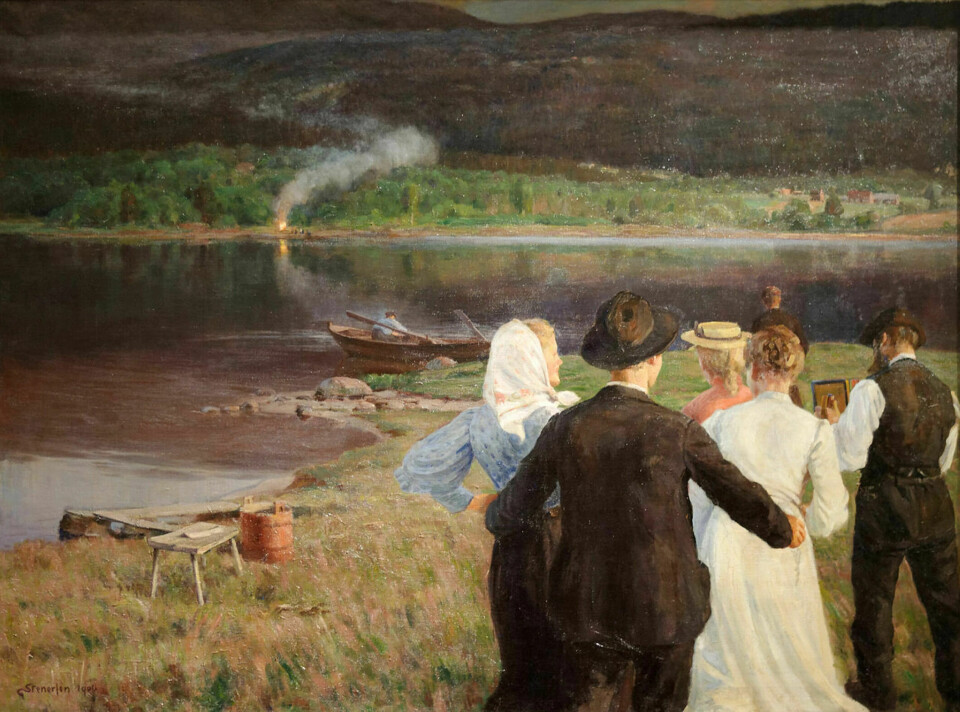
Public holiday until 1770
Beer-drinking farmers with a full work ban became too expensive for society. Therefore, it came to an end in 1770. Not least because there were quite a few public holidays.
Johann Friedrich Struensee was King Christian VII of Denmark personal physician, but due to the king's severe mental illness, the respected Struensee ended up at the helm.
“Struensee introduced a new holiday ordinance. He eliminated Midsummer and, among others, the 3rd day of Christmas, the 3rd day of Easter, and the 3rd day of Pentacost as public holidays,” Baklid says.
So Norwegians can thank the man who had an affair with the Danish-Norwegian queen for being deprived of not just one, but several days off.
In Vestfold, the traditions have been particularly strong. Sandefjord municipality kept the public holiday until 2016, according to Visit Vestfold.
For Sweden, Midsummer is an important holiday with many traditions, such as dancing around a decorated maypole, which symbolises fertility. Most Swedes still get the day off.
What happened to Midsummer in Norway?
“When I was a young boy, we traveled around and watched the bonfires. I’m not so sure why it has changed,” Baklid says.
However, he wonders if it may partly be due to commercial forces, who have not embraced the day in the same way they have with many other holidays, such as Halloween and Christmas.
“They have not embraced it much. They have not promoted the celebration of Midsummer,” he says.
Schools are ending in Norway for the summer around this time, and many people are starting their summer vacations these days, Baklid points out. Perhaps Midsummer celebrations have become too hectic for people right now.
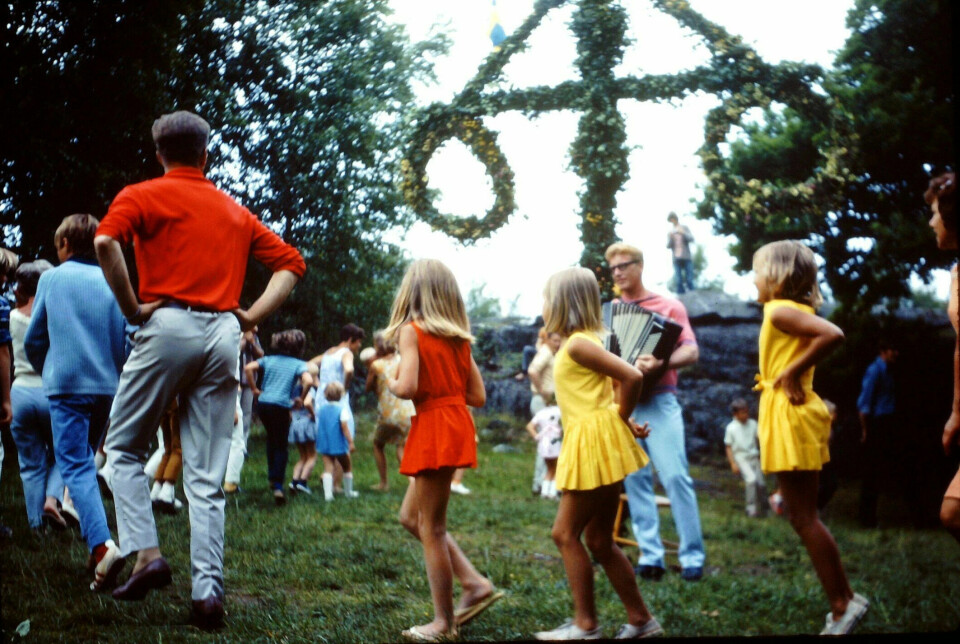
The sacred became even more powerful
Midsummer has not only revolved around bonfires.
In Northwest Norway, many pretend – or play – weddings for children were arranged. Perhaps because many adults have married at this time of year, Baklid suggests. Boys and girls got dressed up as a bride and groom, pretended to get married, and were celebrated. The tradition originated in the 19th century.
For sick people, it was advantageous to seek healing around Midsummer.
“There could be holy springs that people visited: The water in these springs was supposed to be especially powerful,” he says.
A pilgrimage to Røldal stave church is associated with Midsummer. A crucifix that is believed to have healing effects, especially during that time, hangs there.
"Midsummer evening was a festive evening with sour cream porridge, clean houses, and happy people. The children were allowed to stay up all night, and there was dancing and games," Hauan and Willumsen wrote in the 2016 article.
Naked flower picking for greater magical effect
Several customs are also associated with summer flowers, which are perhaps at their most beautiful right now.
If you go out and pick seven different types of flowers and place them under your pillow on Midsummer's Eve, you may wake up having dreamt about the person you will marry.
“And we can maintain another tradition,” Baklid adds. “We can pick plants for medicinal use.”
Before the time of pharmacies, the medicinal plants we found in Norwegian nature were highly important.
Ideally, they should be picked by somebody who is completely naked. They were already more powerful on Midsummer, but the magical effect would be even greater without clothes.
———
Translated by Alette Bjordal Gjellesvik.
Read the Norwegian version of this article on forskning.no











